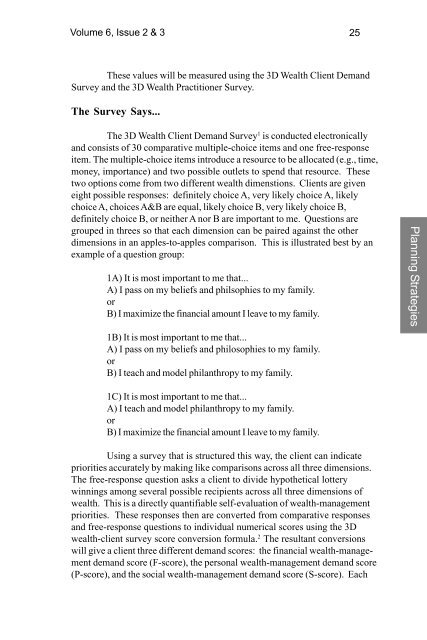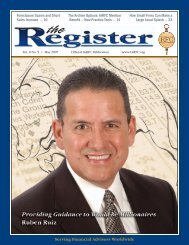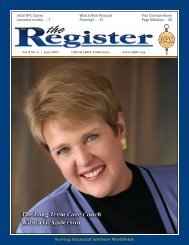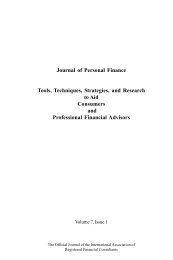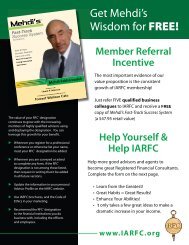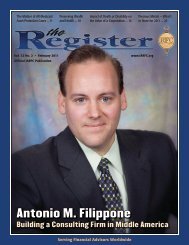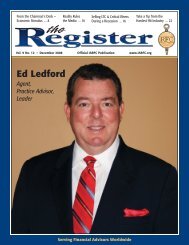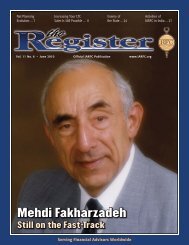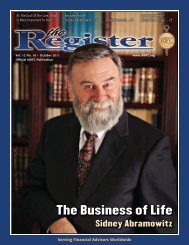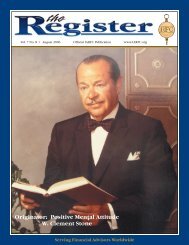3433-vol. 6 issue 2-3.pmd - iarfc
3433-vol. 6 issue 2-3.pmd - iarfc
3433-vol. 6 issue 2-3.pmd - iarfc
Create successful ePaper yourself
Turn your PDF publications into a flip-book with our unique Google optimized e-Paper software.
Volume 6, Issue 2 & 3 25<br />
These values will be measured using the 3D Wealth Client Demand<br />
Survey and the 3D Wealth Practitioner Survey.<br />
The Survey Says...<br />
The 3D Wealth Client Demand Survey 1 is conducted electronically<br />
and consists of 30 comparative multiple-choice items and one free-response<br />
item. The multiple-choice items introduce a resource to be allocated (e.g., time,<br />
money, importance) and two possible outlets to spend that resource. These<br />
two options come from two different wealth dimenstions. Clients are given<br />
eight possible responses: definitely choice A, very likely choice A, likely<br />
choice A, choices A&B are equal, likely choice B, very likely choice B,<br />
definitely choice B, or neither A nor B are important to me. Questions are<br />
grouped in threes so that each dimension can be paired against the other<br />
dimensions in an apples-to-apples comparison. This is illustrated best by an<br />
example of a question group:<br />
1A) It is most important to me that...<br />
A) I pass on my beliefs and philsophies to my family.<br />
or<br />
B) I maximize the financial amount I leave to my family.<br />
1B) It is most important to me that...<br />
A) I pass on my beliefs and philosophies to my family.<br />
or<br />
B) I teach and model philanthropy to my family.<br />
Planning Strategies<br />
1C) It is most important to me that...<br />
A) I teach and model philanthropy to my family.<br />
or<br />
B) I maximize the financial amount I leave to my family.<br />
Using a survey that is structured this way, the client can indicate<br />
priorities accurately by making like comparisons across all three dimensions.<br />
The free-response question asks a client to divide hypothetical lottery<br />
winnings among several possible recipients across all three dimensions of<br />
wealth. This is a directly quantifiable self-evaluation of wealth-management<br />
priorities. These responses then are converted from comparative responses<br />
and free-response questions to individual numerical scores using the 3D<br />
wealth-client survey score conversion formula. 2 The resultant conversions<br />
will give a client three different demand scores: the financial wealth-management<br />
demand score (F-score), the personal wealth-management demand score<br />
(P-score), and the social wealth-management demand score (S-score). Each


